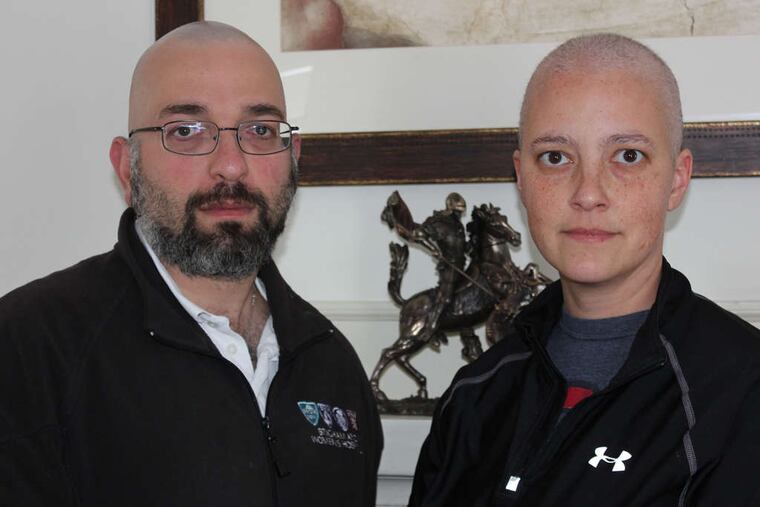FDA warning just the start
By Hooman Noorchashm and Amy J. Reed On Nov. 24, the Food and Drug Administration attached its highest-level warning to a set of devices known as "power morcellators." This decision was the result of a yearlong battle to protect women at risk of having their aggressive cancers exacerbated by the gynecological practice of morcellation. The campaign was prompted by overwhelming evidence that nearly one in 300 to 500 women are at deadly risk from morcellation.

By Hooman Noorchashm
and Amy J. Reed
On Nov. 24, the Food and Drug Administration attached its highest-level warning to a set of devices known as "power morcellators." This decision was the result of a yearlong battle to protect women at risk of having their aggressive cancers exacerbated by the gynecological practice of morcellation. The campaign was prompted by overwhelming evidence that nearly one in 300 to 500 women are at deadly risk from morcellation.
The FDA's failure to recall the morcellators shows a double standard when it comes to medical devices compared with prescription drugs and food products. If a drug or food product is demonstrated to cause a deadly hazard to one in 300 to 500 patients or consumers, the FDA does not hesitate to strictly regulate it. The difference for medical devices is a dangerous piece of federal legislation known as 510(k). In 2011, the Institute of Medicine warned in testimony to the U.S. Senate Committee on Health, Education, Labor, and Pensions, which includes Bob Casey (D., Pa.), that 510(k) does not mandate effective premarket safety testing of devices and does not provide a strong and enforceable postmarket surveillance mechanism. As a result, dangerous or deadly devices can go undetected.
Compounding the problem, the primary goal of the FDA's Center for Devices and Radiological Health is "to bring lifesaving devices to market efficiently." Patient safety is secondary. In essence, the center is more aligned with industry interests than with those of individuals. The end result is the "power morcellator" disaster, yet lawmakers have failed to heed the Institute of Medicine's warnings and offer legislation to protect patients.
And despite the FDA warning, it seems open to letting the gynecological industry save morcellation by testing "containment devices" for use with the practice. This is very disturbing. Presumably these containment devices would be safety-tested on women; the FDA can't be suggesting that they be approved through the streamlined 510(k) process. But could this be ethical? Are gynecologists going to subject women with known cancers to morcellation in containment bags? That would not be ethical. Or would they experiment on large cohorts of women and accept that one in 500 may have their cancers worsened in the clinical trial? Is that ethical?
The bottom line is that the gynecological industry would need to prove that cancers are not spread when these containment devices are used. But the very fact that this deadly complication is possible ethically rules out doing such trials. Any medical center ethics committee would see this ethical flaw.
The gynecological community's response to the FDA advisory is incomprehensible. The American Association of Gynecological Laparoscopists and the American College of Obstetrics and Gynecology continue to endorse morcellation as a safe and effective practice. They are in denial of the fact that the many lives lost did not have to be and that there was any reckless activity in play.
The reason for this resistance to change is threefold.
First, gynecological surgeons believe the risk to patients is justified because the percentage of women in harm's way is considered small.
Second, gynecological surgeons believe that mincing up tissues with cancerous potential is a safe practice. No other surgical specialty accepts this assumption. The gynecological surgeons also believe that open operations in an elective setting have a higher mortality risk than the one-in-300-to-500 risk of spreading a deadly cancer. We believe this is a function of inadequate training in general surgical principles, as gynecological surgeons spend no time training with general surgeons during their residency period.
Third, as physicians we seem to be cultured in the art of dehumanizing our errors and complications by attaching statistics to them instead of human faces. This defense mechanism quite effectively protects our professional egos but is a serious cultural failure in our profession. Why else would the physicians' groups not accept that the many deaths caused by morcellation have been unjust, unwarranted, and avoidable?
The FDA advisory on power morcellators will likely lead to a significant change in how gynecologists practice - as it should given all the women and families who have been irreversibly devastated by this practice for more than two decades.
In this country, we do not tolerate bad medicine. And we certainly cannot accept placing a minority subset of lives at risk for the benefit of the majority.
Let's hope that Congress will use the FDA's failure to effectively regulate power morcellators to act decisively and bring safety to our medical-device industry and health-care system. Inaction is not an option anymore.